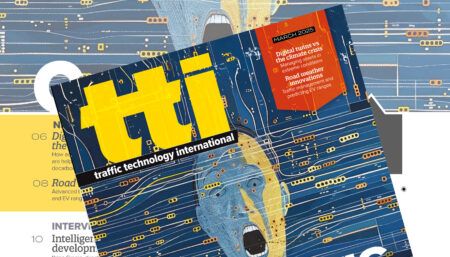Finnish network engineering company Teleste has built a smart and safe 5G cellular connected bus stop at the Nokia Campus in Espoo, Finland, as part of a wider smart city development and demonstration project to show the potential of ultra-fast connectivity in an urban ecosystem.
As well as its ability to connect with buses to provide real-time travel information to customers, the 5G bus stop also addresses one of the growing everyday challenges faced by public transportation operators: the reluctance of the public to use transit services due to concerns over their personal safety, particularly at night or in isolated urban districts.
The innovative bus stop has been designed to improve safety and security in public places through Teleste’s newly launched Connected Zone concept, which was introduced in October last year during the company’s Security Seminar in Stockholm, Sweden, where the concept will continue to be developed and tested as a part of its smart city offering.
Equipped with video surveillance and high-capacity 5G connectivity, the smart bus stops are part of Teleste’s wider Connected Zone safety concept. Using personal alarms, built-in camera monitoring, and dynamic information systems, Connected Zone makes it possible to employ bus stops and shelters to create special safe zones for users of the service, who can connect to the zones via their smartphones.
Through the integration of high-speed 5G connectivity and smart digital displays equipped with advanced security features, the concept allows security personnel to communicate with the bus stops in a unique way, allowing them to receive alarms, see what is happening in and around the shelters, and respond to possible security situations in real time.
Besides facilitating the world’s safest and most secure bus stops, the Connected Zone ecosystem offers cities new opportunities for sharing information, as the bus shelter’s smart displays have great potential to become spaces for innovative delivery of traffic and travel information, as well as generating revenue through advertisements. The messages can even be made more relevant for receivers by collecting data from various sources and using this intelligence to better understand the needs of public transportation users and other target audiences.
The smart bus stop being tested at the Nokia Campus is part of the Nokia Bell Labs-driven LuxTurrim5G smart city ecosystem project. Funded by Business Finland, the project is developing and demonstrating an ultra-fast 5G network based on smart streetlight poles with integrated antennas, base stations, sensors, screens and other devices.
The joint project opens new digital services and business opportunities for a real smart city, boosting innovations, new research ideas and technical developments closer to commercial outcomes.
The 30-month project started 2017, involving nine companies and three research institutes, with the aim of developing 5G digital service infrastructure to improve safety, energy efficiency, air quality, efficiency of transportation and quality of living.
The team is trialling the use of small-cell 5G radio frequency technology and higher frequencies to increase capacity, which requires dense networks of antennas and upgraded network infrastructure.





